Politics
Why Western Tamil Nadu May Have Voted Differently In This Assembly Elections
Venu Gopal Narayanan
Apr 19, 2021, 03:25 PM | Updated 03:24 PM IST
Save & read from anywhere!
Bookmark stories for easy access on any device or the Swarajya app.
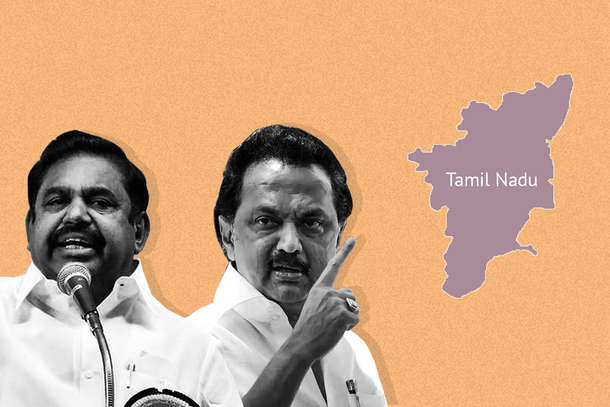
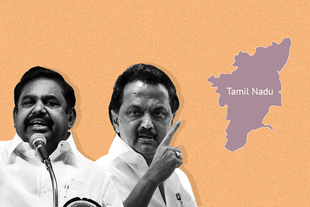
The prettiest spots in Tamil Nadu aren’t just to be found in the Blue Mountains, or in the cerulean waters of the fisheries coast, but in Kongu Nadu as well — that western part of the temple state which straddles the upper Cauvery.
Arcadian scenes of heavenly delight dot every corner of this fertile region, which some analysts believe will buck the trend of a Dravida Munnetra Kazhagam-Congress sweep in the state.
Reams of reportage, surveys and anecdotal evidence indicate that this time round, there is a perceptible, supra-caste groundswell in western Tamil Nadu, in favour of the All India Anna Dravida Munnetra Kazhagam-led National Democratic Alliance (NDA) in general, and Bharatiya Janata Party (BJP) in particular.
Depending on how one maps the Kongu region, western Tamil Nadu hosts around 60 assembly constituencies, and traditionally includes at least eight districts: Coimbatore, Tiruppur, Erode, Salem, Dharmapuri, Namakkal, Krishnagiri and The Nilgiris (some purists would include Karur and parts of Palakkad in it as well).

In the 2016 assembly elections, J Jayalalithaa and her AIADMK won 47 seats in Kongu Nadu on their own. That’s a third of the 135 they won in a house of 234.
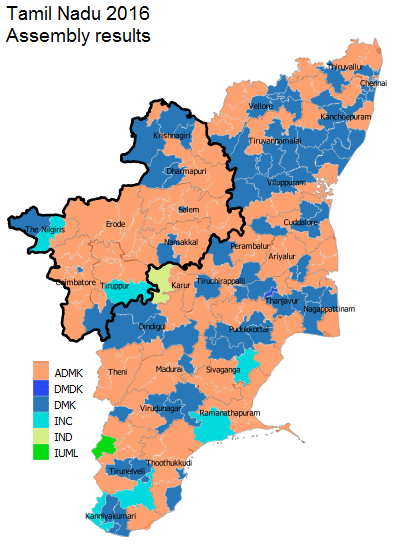
But in 2019, in spite of a seemingly formidable alliance with the BJP, and the locally-dominant Vanniyar-OBC Pattali Makkal Katchi (PMK) of Anbumani Ramdoss, the AIADMK failed to lead in a single assembly segment here. The BJP too, led in none, not even in Coimbatore, though the PMK led in three segments in their bastion of Dharmapuri (marked in violet in map below):
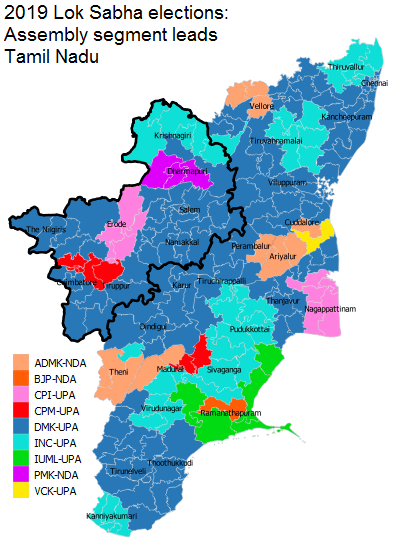
At the state level, they won only one Lok Sabha seat out of 39, with the rest going to the DMK-Congress alliance. The negative vote swings away from the AIADMK were quite large, and fairly consistent across the state. The DMK’s lead in Edappadi segment, which is Chief Minister Edappadi K Palaniswami’s Salem district borough, was 4 per cent.
The magnitude of defeat is even larger, if we recombine the 2016 vote shares of the AIADMK, the PMK and the BJP (who all contested independently in 2016), for an apples to apples comparison.
Note that the negative vote swings are over 20 per cent in a number of seats. This gives an idea of where things stand, since all three parties are part of the NDA in 2021 as well.
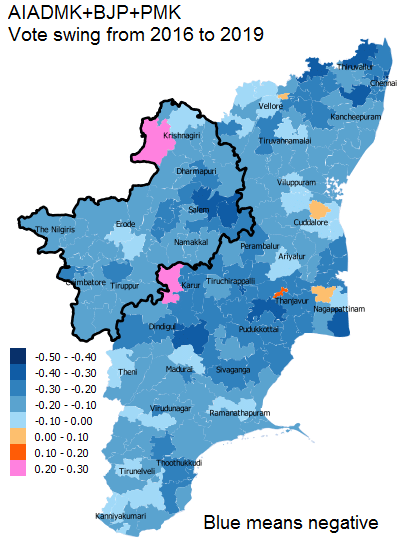
Why, then, would we say that Kongu Nadu might vote differently this time?
One hypothesis is that the Chief Minister, being a local, and a member of the prominent OBC Gounder caste, could rally the region to his party’s banner. Another is that his deputy, O Paneerselvam, could add to the Kongu NDA till by virtue of his being a Thevar, another prominent OBC community.
But the real answer lies in the extremely pronounced identity narratives which course fervently through local politics, in demographics, and in a nascent, magnificent churning, which appears to have finally commenced in Tamil Nadu.
It may not seem so at first glance, if we survey different communities in isolation. Here is a set of maps with the population distribution of scheduled castes and tribes given separately by district:
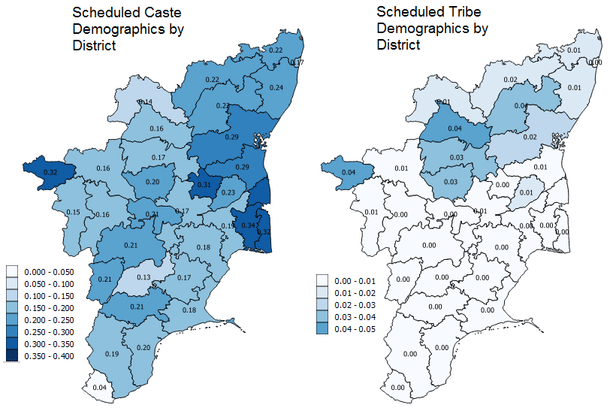
Similarly, here is a set of maps showing different religious identities by district:
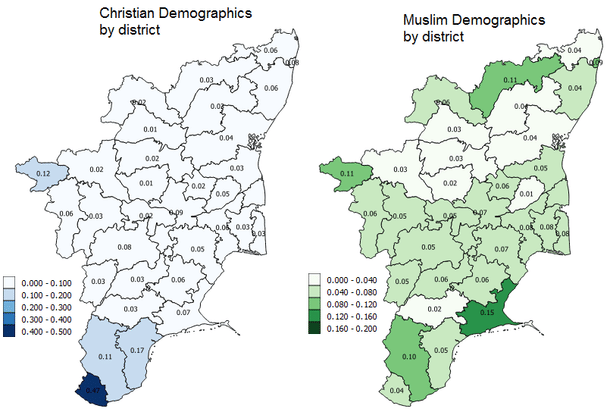
But merge these together and a curious trend emerges, which is nearly exclusive to Kongu Nadu; we see that western Tamil Nadu has the lowest combined percentages of those groupings which have traditionally been the Periyarists’ fodder for identity politics.
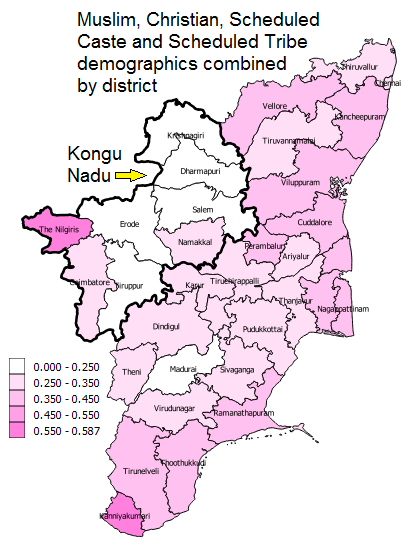
Yet, if that is so, then why did the AIADMK and the NDA get nearly wiped out in the 2019 general elections, and particularly so in Kongu Nadu? The reason is intriguing: it was the Colombo Easter bombings of 21 April 2019 which jolted Tamil Nadu awake, like little else had shaken the state in decades, when a dragnet for the jihadi accomplices of that terrorist attack spread to encompass suspects resident in the state.
But there could be no real clamour or popular response, since Tamil Nadu had already gone to the polls three days previously on 18 April 2019. We got a hint in the Vellore re-polls of August 2019, where the DMK won by just 8,141 votes, but too many analysts put that close fight down to local, legacy polarisation.
Nonetheless, an increasing number of Tamilians have begun, from then on, to actively question a half-century old Periyarist superstructure fashioned on pure vote banking, which successfully masqueraded for this long as Tamil pride.
If ever there was an abrupt heave, to graduate from community and self to civilisation and state, then this was it. That is why, as readers would have seen on television, the BJP’s star campaigners attracted such large crowds in dusty hamlets of western Tamil Nadu, and long lines thronged road shows, in the one region where the numbers are less weighed down by the identity vote. Gounder and Thevar, Dalit and Vanniyar, and Mudaliar, Brahmin and Vellalar alike, have started to believe that they can collectively force a break with a torrid past.
Perhaps, that is why a young BJP candidate named Vanathi Srinivasan could trump mega star Kamal Haasan in Coimbatore South. Perhaps, that is why ex-IPS ‘Singham’, K Annamalai, could just swing it for the BJP in Aravakurichi seat, not too far away. And perhaps, that is why the AIADMK chose to stick with the BJP, in spite of it being as clear as day that they had lost much of the identity vote, which they once commanded, to the DMK.
Of course, there is a long way to go, and as on date, this is still only a thesis; that is since, in a world ruined by identity politics, demography is everything. But the numbers do hint at a novel, centennial churning on the swirl in Tamil Nadu, with its epicentre in Kongu Nadu.
All data from Census 2011 and Election Commission of India websites.
Venu Gopal Narayanan is an independent upstream petroleum consultant who focuses on energy, geopolitics, current affairs and electoral arithmetic. He tweets at @ideorogue.





